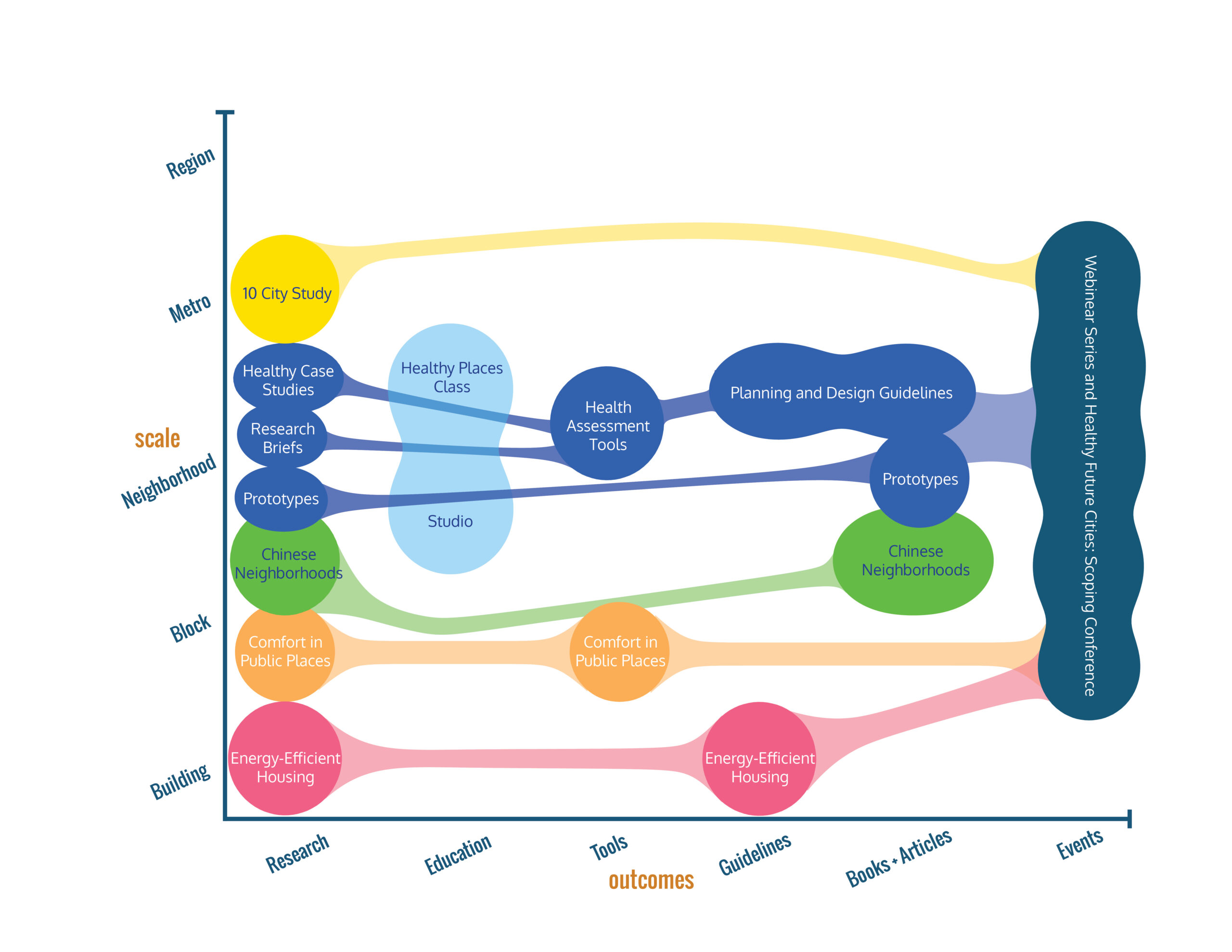About HAPI
The Health and Places Initiative (HAPI) investigated how to create healthier cities in the future, with a specific emphasis on China. Bringing together experts from the Harvard Graduate School of Design (HGSD) and the Harvard T.H. Chan School of Public Health (HSPH), it created a forum for understanding the multiple issues that face cities in light of rapid urbanization and an aging population worldwide. As of the 2017-2018 school year, parts of this initiative have been folded into the Healthy Places Design Lab at the Graduate School of Design.
This project had two phases. The second phase of the project, from 2016 to 2017, collaborated with the Joint Center for Housing Studies and the Harvard Center for Green Buildings and Cities. It:
Prior Work
The HAPI program ran from 2013-2016, investigating the scope and possibilities for creating healthier places in the future, with a specific emphasis on China. The project brought together experts from the Harvard Graduate School of Design (HGSD) and the Harvard T.H. Chan School of Public Health (HSPH) to create a forum for understanding the multiple issues that face cities in light of rapid urbanization and an aging population worldwide. Through the work of dedicated faculty and researchers, the project developed templates for alternative models of urban development, stressing their impact on health and aging.
The project had three main components: education, research, and next steps. Area 1, focused on education, included courses taken by students in both the design and public health schools, Harvard Extension School courses, and a webinar series. A new joint degree between the Master in Urban Planning and the Master of Public Health started in 2017. Area 2, on research, has components at the building, neighborhood and city scale. Finally, it created a forum for further work on the connections between built environments and public health.
Click on the image below for a larger version.
